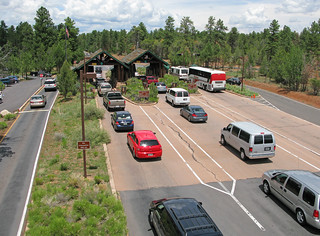From National Park Service and USGS, April 16, 2014.
Mercury has been discovered in fish in some of
the most remote national park lakes and streams in the western United States
and Alaska. Mercury levels in some fish exceeded U.S. Environmental Protection
Agency health thresholds for potential impacts to fish, birds, and humans.
The information about mercury, and its appearance in
protected areas considered to be relatively pristine and removed from
environmental contaminants, is in a recently published
scientific report
from the U.S. Geological Survey and the National Park Service.
The study of mercury in fish is the first of its kind to
incorporate information from remote places at 21 national parks in 10 western
states, including Alaska. Western parks were selected for this study because of
the significant role that atmospheric mercury deposition plays in remote
places, and the lack of broad-scale assessments on mercury in fish in remote
areas of the west.
Mercury concentrations in fish sampled from these parks were
generally low, but were elevated in some instances. This study examines total
mercury in fish, of which 95 percent is in the form of methylmercury, the most
dangerous form to human and wildlife health.
Mercury is harmful to human and wildlife health, and is
among the most widespread contaminants in the world. It is distributed at a
global scale from natural sources, such as volcanic eruptions and from human
sources such as burning fossil fuels in power plants. Mercury is distributed at
local or regional scales as a result of current and historic mining activities.
These human activities have increased levels of atmospheric mercury at least
three fold during the past 150 years.
... The
authors found that mercury levels varied greatly, from park to park and
among sites within each park. In most parks, mercury concentrations in
fish were moderate to low in comparison with similar fish species from
other locations in the Western states. Mercury concentrations were below
EPA’s fish tissue criterion for safe human consumption in 96 percent of
the sport fish sampled.
For more on this from the U.S. Geological Survey,
click here.





